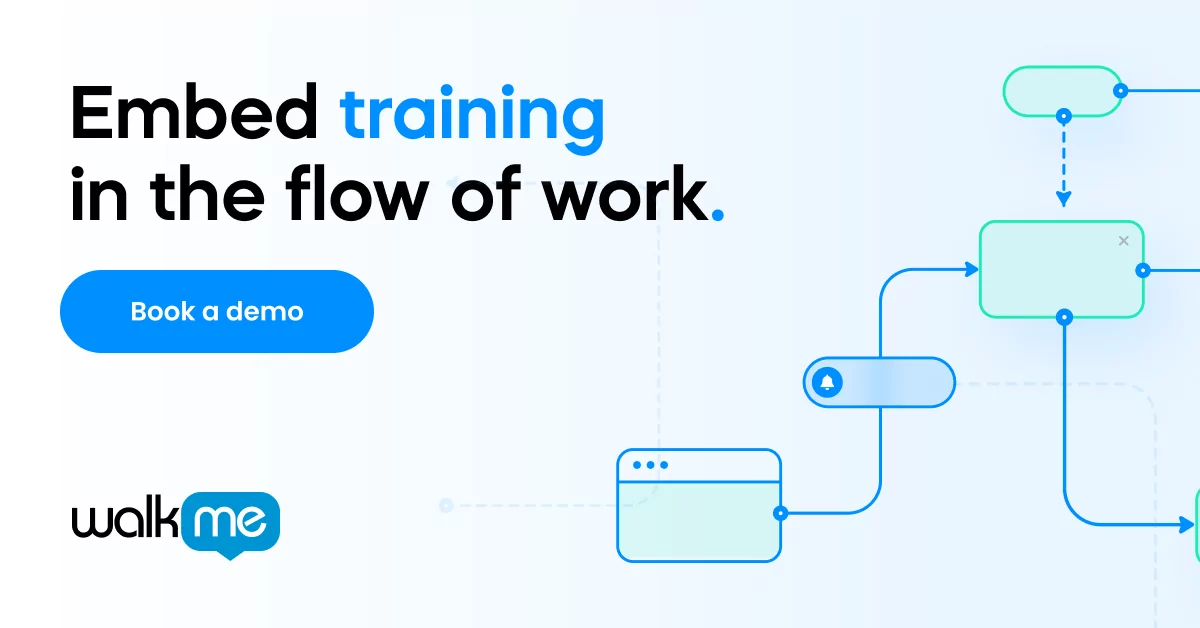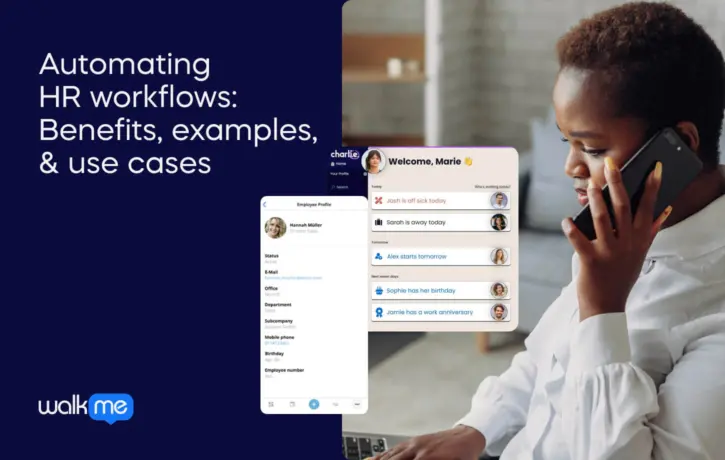HR departments manage the entire employee lifecycle, encompassing recruitment, hiring, onboarding, various methods of training, and managing departures.
Traditionally, HR heavily relies on manual processes and a hands-on approach to completing tasks. However, this is rapidly evolving.
This means that any outdated HR process workflows are inadequate for the diverse roles and responsibilities required of HR. Implementing the proper HR workflows can automate repetitive administrative tasks so that your business can focus more on higher-level processes around hiring, developing, and retaining employees.
HR professionals must adapt to these impending changes to stay relevant and avoid being outdated.
By the end of this article, you will understand:
- What automated HR workflows are, as well as their benefits and challenges
- How to choose the right tools to automate HR workflows
- Examples of companies that offer HR workflow automation software
- Use cases for HR workflows
- Best practices for implementing HR workflows within your company
What are automated HR workflows?
HR workflows are a form of HR technology that consists of automated sequences of tasks or processes routinely carried out in HR management. They encompass various HR duties, such as payroll processing, recruitment activities, and managing time-off requests.
These tasks are vital for the seamless functioning of a company but can often be labor intensive and monotonous. Implementing a well-designed HR workflow can alleviate stress and conserve time by standardizing routine processes, minimizing the need for manual handling of predictable and repetitive tasks.
Benefits of automating HR workflows
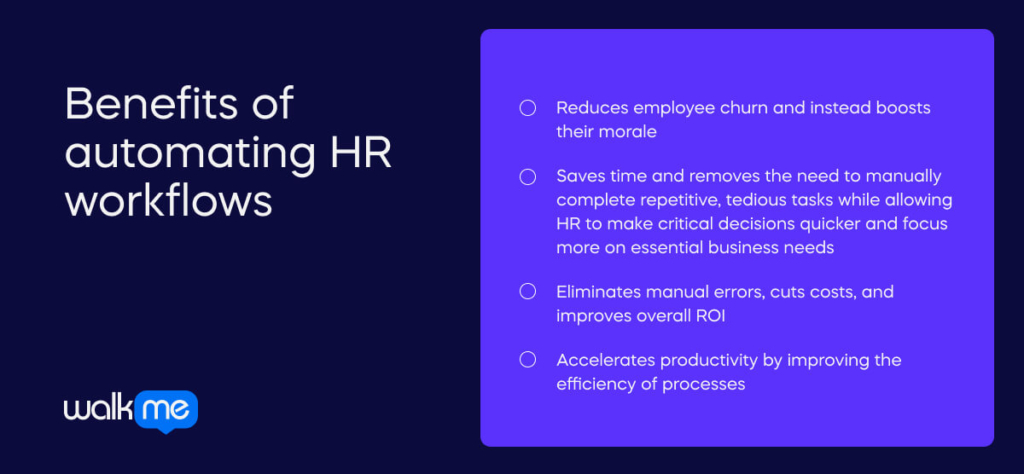
Before implementing automation in HR workflows, companies should recognize its advantages for business transformation. HR processes are typically document-heavy, involving considerable manual labor and paperwork, which can lead to errors and inconsistencies.
The key reasons for adopting HR workflow automation include:
- Reduces employee churn and instead boosts their morale
- Saves time and removes the need to manually complete repetitive, tedious tasks while allowing HR to make critical decisions quicker and focus more on essential business needs
- Eliminates manual errors, cuts costs, and improves overall ROI
- Accelerates productivity by improving the efficiency of processes
Problems associated with automating HR workflows
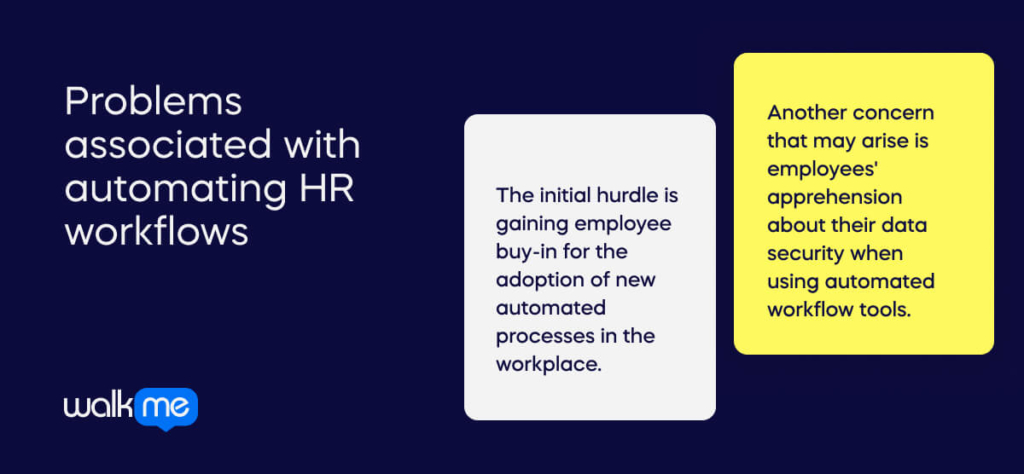
Automating HR workflows can offer significant advantages to HR teams seeking to streamline processes and reduce the risk of errors in repetitive manual tasks. However, it’s essential to be aware of potential challenges that may arise.
The initial hurdle is gaining employee buy-in for the adoption of new automated processes in the workplace. Some staff members may resist change significantly when technology is involved, which can slow down the integration of automated workflows. In the worst-case scenario, employees may resign due to discomfort with the significant changes to their accustomed work methods.
To mitigate resistance to change, leadership must recognize the necessity of implementing a people-first digital transformation strategy. This strategy should help employees grasp the benefits of the changes and allow them to ask questions and express concerns openly before introducing new tools.
One practical approach is to ensure that employees receive thorough training on how the new automated workflows function, enabling them to understand the processes better and discover ways to enhance their workflows.
Additionally, companies can employ digital adoption software to gradually assist employees in transitioning to automated workflows, using interactive walkthroughs.
Another concern that may arise is employees’ apprehension about their data security when using automated workflow tools. This is particularly relevant in cases like automated payroll systems, where employees may rightfully worry about data theft by malicious actors.
Therefore, it is essential to ensure that any automated workflow tools adopted by your company incorporate robust security features and that employees receive training on these security measures.
Employees may also need help integrating their existing workflows into the new automated system. If you plan to introduce automated workflows, engaging in discussions with employees beforehand is advisable to ensure that this change aligns with their needs.
It’s essential to evaluate the tools currently employed by employees in their daily work routines and assess how the new automation tool can enhance their productivity.
Choosing software for automating HR workflows
Organizations should select a system tailored to their business’s specific size and nature to maximize the benefits of an HR automation platform. The software needs to address the particular HR needs of the organization.
Key features to look for in HR automation software include:
Pricing
The pricing structure of HR workflow software should be flexible and transparent. There should be no hidden fees, and you should be clear on any discounts or rebates in advance. The software’s subscription plans should support popular payment methods for convenience.
The type of tasks it can help you automate
Before investing in HR automation software, consider which tasks could be streamlined by such a system. Automating training completion reminders could be beneficial if employees struggle to complete training on time. Other everyday tasks that HR automation software can simplify include attendance tracking and employee onboarding.
Additionally, with the myriad of software options available, it’s essential to determine if you require cloud storage for sensitive employee data and documents. Companies in highly regulated industries, like banking, often opt for on-premise solutions due to stringent data security requirements.
Another critical consideration is the number of employees using the new HR software, as this can influence the choice of system based on its scalability and user capacity.
User-friendly interface
Any tool to automate HR workflows should have a straightforward and intuitive user interface. Since HR personnel often need more technical expertise, they may require extensive training to navigate a complex interface.
Thus, HR software with an easily understandable and operable interface is more favored. The goal is to minimize the training needed for HR staff to use the software efficiently.
Visual form builder
This type of software should also include user-friendly tools for creating workflow forms. A visual form builder allows individuals to develop workflows quickly, regardless of their technical background.
Customization
Every organization has distinct HR processes. The automation software should offer easy customization to align with the unique HR workflows of the organization.
It should be flexible enough to incorporate various tasks into the workflow and delegate them to relevant stakeholders.
Examples of providers who offer HR workflow automation software
Once you are aware of what you need from tools that automate HR workflows, here are some examples of HR automation software providers:
- Personio
- Hi Bob
- Frevvo
- CharlieHR
- Tallyfy
- Zapier
- Zoho
Use cases of common HR workflows you can automate
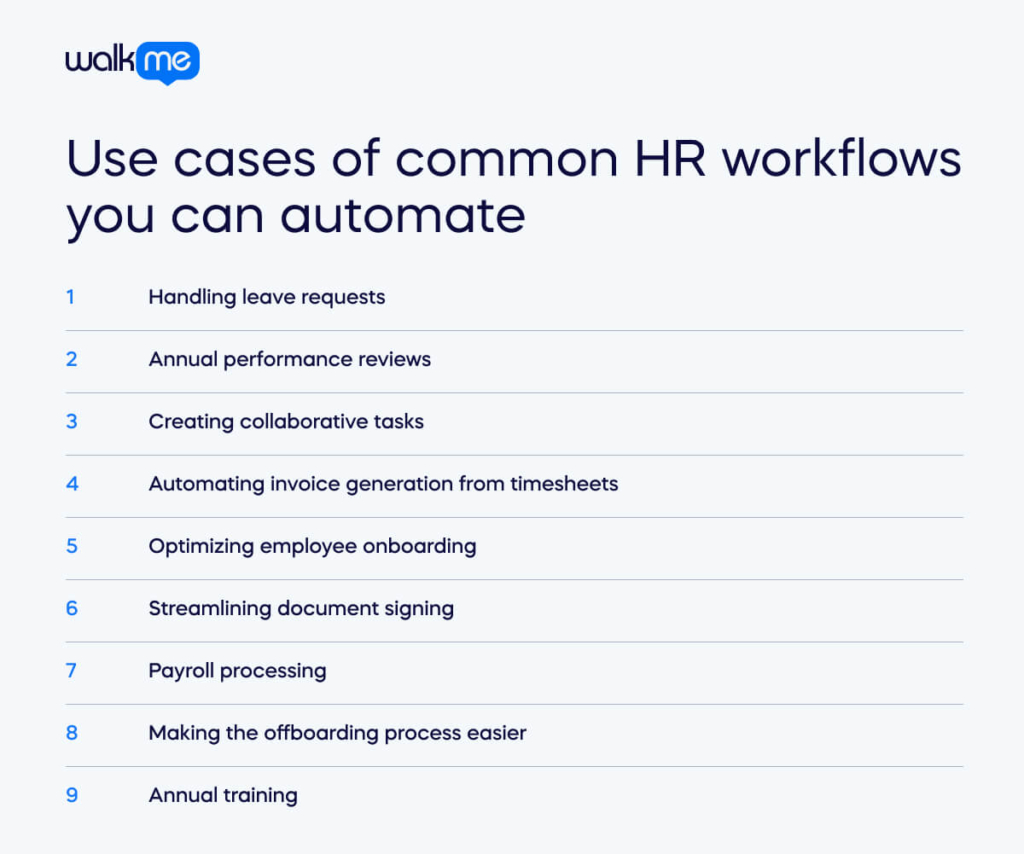
The increasing demand for HR workflow automation is primarily due to its versatility and customizability. A wide array of tasks and processes can benefit from automated HR workflows, such as:
Handling leave requests
HR workflow software simplifies the management of leave requests, often as complex as onboarding processes. The tool consolidates employee information, enabling employees to submit their leave requests easily.
Automation replaces the messy, lengthy email exchanges traditionally required for leave requests, centralizing information for easy and instant access. It also offers features like data filtering and organizing to-do lists for communications, formal notices, and meetings.
Annual performance reviews
HR software allows for the creation of custom employee performance appraisal questionnaires that employees and managers can fill out digitally. The software can be programmed to send these surveys company-wide on predetermined dates, and it typically includes detailed statistics and analytics features to provide insights into the company’s internal dynamics.
Creating collaborative tasks
The software facilitates the creation of tasks for daily activities, setting deadlines, adding team members to files, and tracking various duties. For instance, a meetings folder can be set up for individual and team meetings, with tasks for each event, including agenda setting, room booking, and form approvals.
Automating invoice generation from timesheets
In many organizations, client billing is based on employee timesheets. Integrating automated HR systems with invoice generation applications makes tracking billing hours and creating invoices more efficient. When an individual enters a timesheet into the HR system, corresponding invoices are automatically generated and sent to clients for approval and payment.
Optimizing employee onboarding
Automated workflows enhance the employee onboarding experience by enabling new hires to complete and sign paperwork electronically. Automation ensures accurate and consistent processing of each onboarding step, reducing stress for new hires and the HR team.
Streamlining document signing
The HR department often requires numerous documents to be signed and stored, ranging from offer letter acceptances to confidentiality agreements. Automating HR workflows can incorporate digital signatures, enabling documents to be signed remotely and stored automatically in the HR management system.
This process reduces the need for physical paperwork and expedites the signing process, making it more convenient for candidates and approval authorities within the company.
Payroll processing
Automation streamlines the labor-intensive process of payroll management. It can track organizational changes like promotions, resignations, or new hires and configure payroll workflows to alert relevant stakeholders about these changes.
Making the offboarding process easier
You can set up automated workflows to send surveys to former employees for feedback after their departure. This software type can also generate contractual documents for signature and schedule exit interviews, reminding existing employees of their responsibilities before leaving.
Annual training
Workflow automation aids in maintaining compliance through automatic training assignments. It can integrate with a learning management system to assign appropriate training to employees and send reminders to complete the training by a specified deadline.
Tips to consider before automating HR workflows
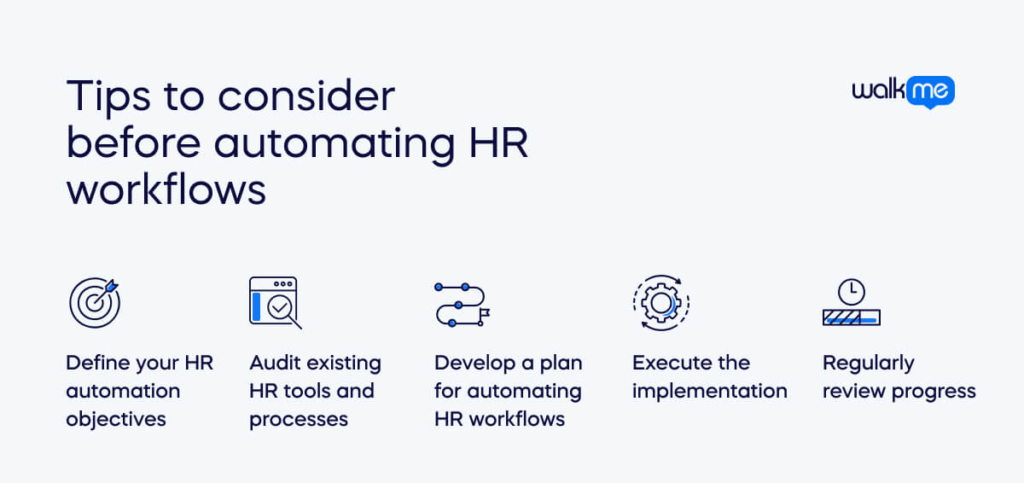
To successfully integrate HR automation software within your organization in the best way, a strategic approach is essential.
Automation fosters progress not by replacing jobs entirely but by streamlining specific job functions where human inefficiency, inconsistency, or risk is prevalent. This underscores the need for a human perspective in guiding the implementation of HR automation for maximum effectiveness.
Below is a step-by-step guide for automating HR processes:
1. Define your HR automation objectives
To embark on a successful HR workflow automation project, identify your objectives. Do you aim to save time for your HR team, enhance payroll efficiency, or achieve other specific goals within your business? Document these HR-related objectives to monitor progress effectively.
2. Audit existing HR tools and processes
Conduct an audit of your HR team’s current processes and tools. This step is crucial to understanding what aspects require automation and identifying inefficiencies.
3. Develop a plan for automating HR workflows
After identifying the inefficiencies and gaps in your current HR workflow, devise a plan to automate these processes. Ensure that your team agrees with the proposed changes. It’s also vital to consider a change management plan to gain support from the broader organization for the new HR workflows.
4. Execute the implementation
The method of implementing your new HR workflows depends on your organization’s specific needs. To reduce disruption, consider a phased rollout, starting with a single process or specific HR function before extending to other areas.
5. Regularly review progress
Post-implementation review is critical. After your new HR workflows are in place, evaluate their effectiveness. Gather feedback from your HR team and the wider organization, and make necessary adjustments. This ongoing review ensures the continuous improvement and effectiveness of your HR automation strategy.
The future of automating HR workflows
Automation has become an essential component of HR workflow management.
Automating HR workflows delivers substantial time savings throughout the HR department while enhancing employee productivity. It alleviates the burden of repetitive administrative work, mitigates the risk of burnout, and liberates your HR team to concentrate on the human aspect of human resource management.
The outcomes for your company encompass heightened productivity, more engaged employees, and revenue increases that far outweigh the costs of implementing new software.
Nevertheless, it’s crucial to introduce any new workflow tool with an effective change management process capable of addressing resistance to change, facilitating digital adoption, and ensuring long-term utilization.
